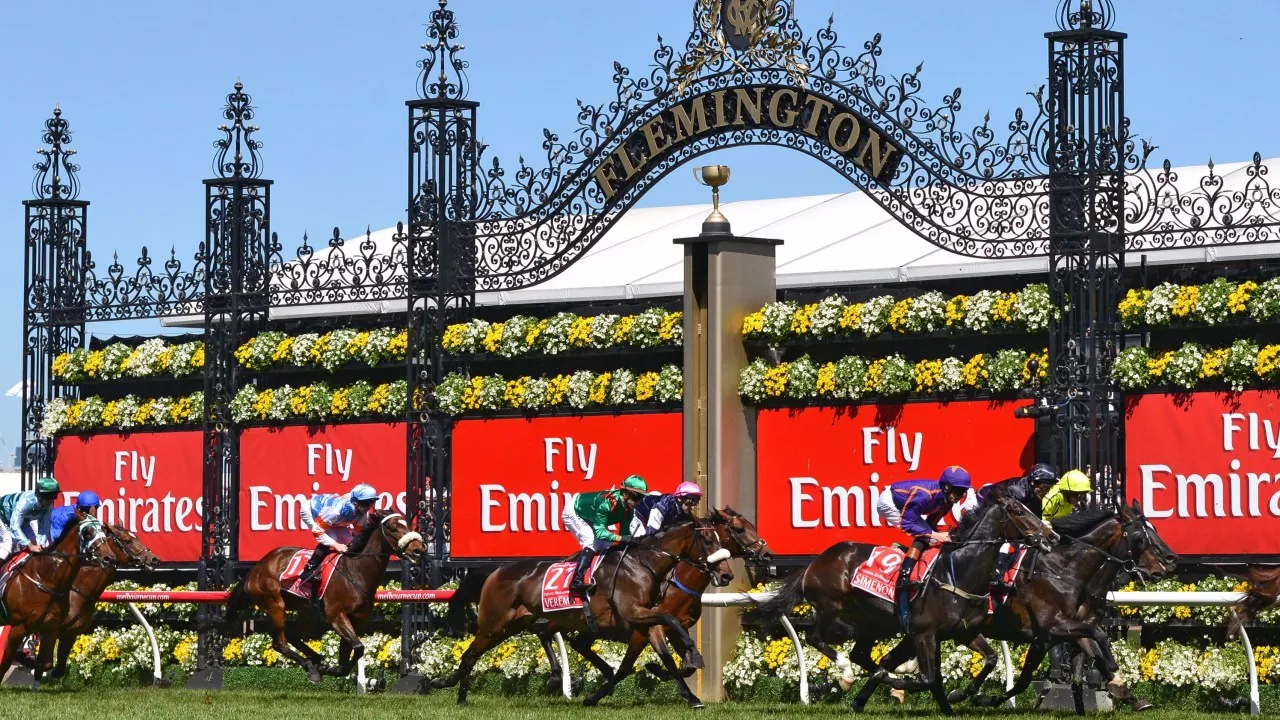Covid-19 rains on Melbourne Cup parade
Organisers’ hopes of having limited crowds at Australia’s biggest week of horse racing have been dashed
MELBOURNE:Australia’s Melbourne Cup has drawn a crowd for over 150 years but next week’s running will be a subdued affair with social distancing rules robbing “the race that stops the nation” of its usual festive atmosphere.
The iconic two-mile handicap is the jewel in the crown of a week-long carnival that brings more than 300,000 punters through the turnstiles, drawing 81,000 to Flemington Racecourse last year.
This year, the thundering of hooves will echo in an empty grandstand, with only essential staff, jockeys and officials at the track due to social distancing restrictions.
The Covid-19 pandemic has been a hammer blow for sports-mad Melbourne, with a second wave of infections plunging Australia’s second-biggest city into a nearly four-month lockdown.
Cautious authorities allowed hospitality and retail businesses to re-open on Wednesday and lifted some social restrictions for the city’s five million people.
But organisers’ hopes of having limited crowds at Australia’s biggest week of racing were dashed in a blow to a multi-billion dollar industry that supports about 70,000 full-time jobs.
“The impact on our bottom line has been enormous,” Victoria Racing Club (VRC) Chairman Amanda Elliott told Reuters.
The VRC hosts all four of the carnival’s marquee events, starting with Saturday’s Victoria Derby, the A$8 million ($5.70 million) Melbourne Cup on Tuesday, the VRC Oaks on Thursday and the MacKinnon Stakes the following Saturday.
All draw huge crowds, with a party atmosphere bubbling by the track’s rails and in sponsors’ opulent marquees in the exclusive ‘Birdcage’ precinct.
The VRC derives about 70% of its annual revenue from Cup week but the closed racetrack has meant renegotiating terms with broadcasters and corporate partners.
“Obviously we were terribly disappointed with not being able to have anyone here,” said Elliott.
“We’re comfortable with our balance sheet, and the banks are too, but certainly it has been a big impact.”
RACING OR BELARUSSIAN SOCCER
As for all industries that draw crowds, Australian horse racing has been hit hard by the pandemic, with tracks’ income from hospitality and corporate sponsorship having flat-lined.
Yet many in racing are counting their blessings.
The country’s major winter sports -- rugby league and Australian Rules football -- were shut down for months as Covid-19 infections climbed in March, exacting a huge financial toll on the leagues.
Racing, however, was allowed to continue holding meetings without crowds, providing a lifeline to thousands of trainers, jockeys and breeders.
The government was also generous with financial support, allowing state federations to provide targeted relief.
Victoria state, of which Melbourne is the capital, has had no race crowds since March but last week governing body Racing Victoria (RV) reported a A$10.7 million surplus for the financial year to June 30, underpinned by a surge in betting in the final quarter.
While other betting markets were frozen, Australian racing was a major beneficiary of the global sports shutdown.
“At one point, it was our racing and Belarusian soccer as the only two sports on the planet,” RV Chief Executive Giles Thompson told Reuters.
“So that meant people were desperate for live sport, live entertainment. Particularly in the winter months, we had huge audiences.
“Those with the money to spend, couldn’t spend it on other things.... so we benefited significantly from the increase on our wagering.”
FURTHER DIVIDENDS
If lead-up races are any guide, RV, which has a joint venture with wagering giant Tabcorp, stands to reap further dividends through Cup week.
Betting turnover increased by nearly a third year-on-year at the A$5 million Caulfield Cup two weeks ago, and was up nearly 30% for last week’s A$5 million Cox Plate. Neither of the Melbourne marquee races had crowds.
Other Australian states have allowed fans back to racetracks and Victorian authorities are expected to follow suit in coming months, with new Covid-19 infections down to a trickle.
But the industry will remain wary while the pandemic lingers, and its true impact may not be known until a government programme of Covid-19 welfare payments is wound down in the first quarter of 2021.
Andrew Nicholls, chief executive of the Australian Trainers’ Association, told Reuters that bloodstock prices had fallen and there had been an uptick in owners defaulting on payments to trainers.
“It’s been a bit tough out there moving the horse-flesh around,” Nicholls said.
“Financial-wise, there’s been a few pressures and we won’t see where that ends until we come out of the government subsidies next year.”


COMMENTS
Comments are moderated and generally will be posted if they are on-topic and not abusive.
For more information, please see our Comments FAQ